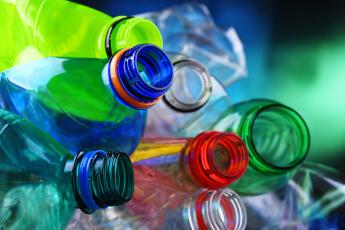Many waste items provide important value before being tossed into a bin. Discarded plastic products, for example, originally serve as packaging to keep school lunches fresh, lightweight bottles for efficiently transporting fresh water to hard-to-reach areas, containers for soaps and detergents that facilitate hygiene – and much more. But what if that initial purpose was just the beginning? What would it look like if a piece of plastic retained value as long as it exists on the planet, and could be put to good use time and time again?
Perhaps the biggest impediment to realizing this vision has been the physical limitations of the predominant recycling method — known as “mechanical recycling.” But in the past few years, petrochemical manufacturers have made major breakthroughs in what’s known as “chemical recycling” that could completely transform how we define “waste” and help populations around the world get more out of plastic.
In recent decades, recycling plastic has almost exclusively meant melting down mixed, shredded plastic into uniform pellets of large molecules, or polymers, for manufacturers to transform into new products. But a plastic polymer is made up of monomers that can only withstand this heated mechanical recycling process a limited number of times — repeated melting weakens the chemical bonds between monomers, making the plastic more degradable.
Thankfully, petrochemical companies are making enormous strides in extending the life of used plastic products by turning them back into their original building-block monomers. This process of chemical recycling allows for nearly limitless recycling of the same materials without the degradation caused in the mechanical process — essentially unlocking the latent value of what has so long been considered plastic “waste.”
Advancements in chemical recycling and other, related technologies are a direct result of the research and investment of petrochemical companies. As experts in making virgin (non-recycled) polymers from their original feedstocks (primarily natural gas liquids at petroleum oil), petrochemical makers are exceptionally well-positioned for success in this space. Here are some updates from the past 6 months alone:
- British Petroleum (BP) in October announced a $25 million pilot plant for recycling plastics at their refinery complex in Illinois. This would test BP’s new technology to transform currently un-recyclable plastics into new plastic feedstock.
- In April, INEOS provided practical proof of the recyclability of polystyrene, one of the most widely-used plastics that has been particularly difficult to effectively recycle. INEOS completed the first successful test runs producing new polystyrene from previously used plastics. INEOS in October also introduced a new type of plastic made up of previously recycled plastics.
- In July, SABIC shrunk their “cradle to grave” environmental footprint by introducing a new hybrid plastic that combines two polyesters, one of which is made up of previously recycled plastics.
- In August, Dow Chemical signed an agreement with Fuenix Ecogy Group, which uses a pyrolysis technology to recycle scrap plastics. Dow will purchase Fuenix’s pyrolysis oil and turn it into new polymers at their plant in the Netherlands.
- In April, Eastman announced their “carbon renewal technology” capable of recycling some of the most complex plastic waste, including non-polyester plastics and mixed plastics that cannot be recycled with conventional recycling technologies. The process partially oxidizes the plastic and converts it into the basic building blocks of certain Eastman products.
- In June, ExxonMobil introduced two new types of polyethylene to allow full and easier recycling of laminated and other sealant packaging materials used for drink cartons, paper cups, aluminum foil and other products.
These examples are part of a much larger effort by petrochemical companies that is pushing us toward a world in which less plastic goes to waste.


